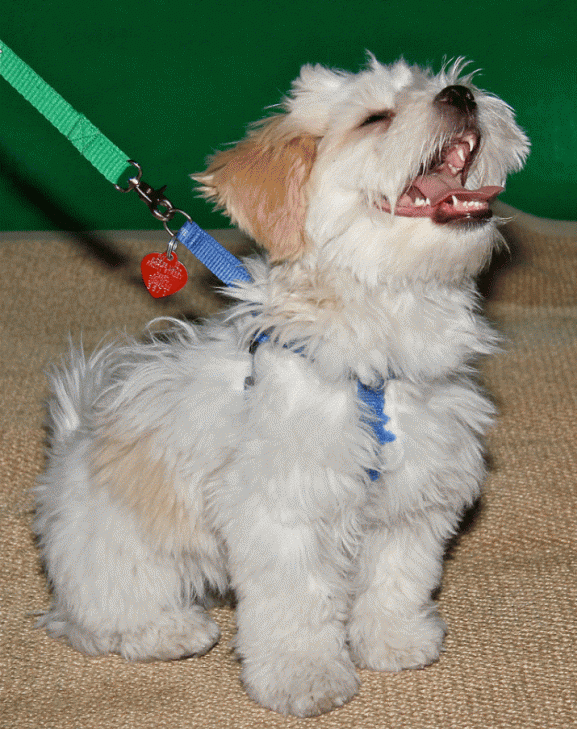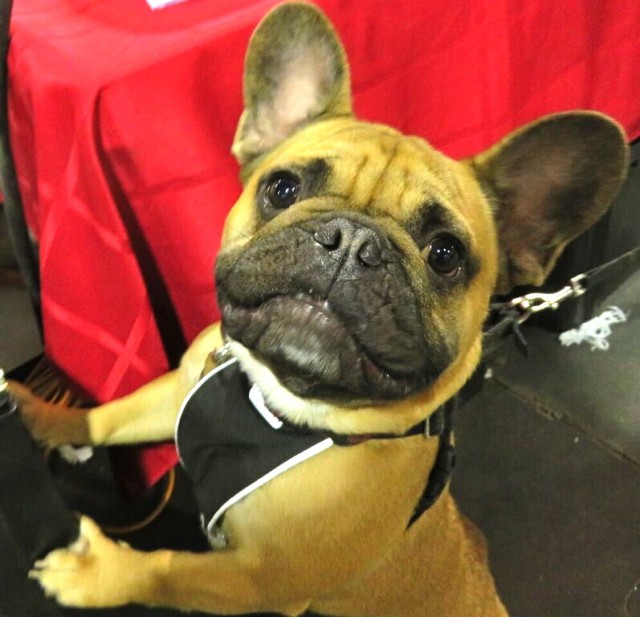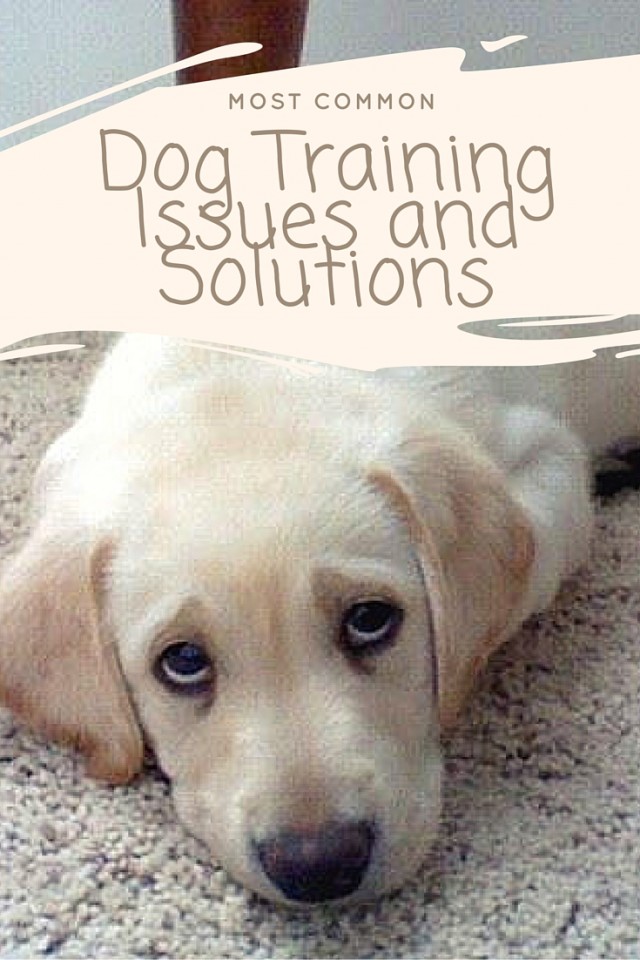Training Your Puppy or Dog
Have you ever wondered why your dog behaves they way he does? Or maybe you just got a new puppy and don’t know where to start with training. Today we explore the most common dog training issues and share solutions from expert dog trainers.
By thoroughly understanding these problems, you can better overcome or prevent them.
Positive reinforcement training
Always use a technique that is both force-free and motivational when training. Keep things fun for both you and your dog. Positive reinforcement training is when you reward a dog for doing something right- using a toy, treats or cuddles or even a walk- rather than punishing them for doing an incorrect behaviour.
See our list of the Top Positive Reinforcement Dog Trainers
Remember the dog trainer’s mantra: ”The more a behaviour is rewarded, the more likely it is to occur”.
Start with the basics: 7 Golden Rules of Puppy Training
Most Common Dog Training Issues and Solutions
1) Potty Training

When you’re potty training your puppy, it is important that you create a strict schedule for your puppy that includes lots of puppy play time, as well as lots of chances to go outside for a potty break. What is equally important is to learn the signals your puppy is giving you that tells you he or she needs to use the bathroom.
Signal may vary, but the basics include:
- sniffing the floor
- looking for a private place to pee (like behind furniture)
- going back to a place where he or she has previously gone to the bathroom
- going to and sniffing the door, and whining or barking
If you notice your puppy doing these things, you should take him or her outside as soon as you can!
*A helpful tip for potty training is to give your puppy lots of encouragement, commands (try “Hurry”), and give your puppy some reward (like treats and petting) every time they get it right.
For more potty training tips, read expert, trainer and founder of Who’s Walking Who Dog Training Centres, Gillian Ridgeway’s “Step by Step Guide on How To House Train your Puppy Successfully”.
Check out this fun video of Kilo the Pug using his Cats of Thrones Cat Toilet- he does not actually use it, he goes outside several times a day or occasionally on a pee pad or a carpet but it was a funny trick. Train your dog to use a toilet!
2. Leash pulling, and “freight train walking”

Leash training helps keep your dog safe and allows you to control your dog if he or she becomes agitated or excited (like when a squirrel runs past!). However, it is very important that your dog does not pull on the leash and make you walk like you’re being dragged along by a freight train. At the same time simply tugging on the leash, or saying “heel” over and over teaches your dog nothing. Here are some tips from trainer Gillian Ridgeway that will make your next walk with your dog more enjoyable.
To correct leash pulling:
- make sure you get a properly fitting, non-tightening collar or harness.
- giving him or her enough slack
- use praising or positive reinforcements when he or she heads in the right direction
- always give lots of encouragement
If your dog is pulling on the leash, make sure you don’t reciprocate and try to pull him or her back to you. Instead, one option is to stop, kneel down to his level and maintain a happy tone to bring him back to you. We actually practised heel and loose leash walking inside the house using a wooden spoon and peanut butter with Kilo as he was a shocking puller.
Read more from Gillians’ 5 Steps to a Fun walk without Leash Pulling!
3. Basic Obedience, Tone, and Commands
I started working on basic obedience like Sit, Come and Stay as soon as we met Kilo the Pug.
He is now really good at Sit anywhere and it is such a useful behaviour. He is great at come and stay without distractions but we still work on recall regularly as I do not trust him outside the house.
What’s really important with dogs is to make sure that you have the right tone appropriate for the situation. For instance, if you want to calm your dog down, make sure your tone is calming.
Tone is so important, like when you want to call your dog to you, make sure you have a happy tone.
Use cues and marker words consistently, like “yesy” “sit” “off”, “leave it,” and the ever-important “good girl” or “good boy.” When you’re training your puppy, make sure to reward and praise your dog.
Read: Heather McLeod’s Positive Dog Training Foundations Tips
4. Jumping Up On People

When your dog jumps up to greet you when you walk in the door, it is a friendly, flattering gesture and it can be very cute when puppies are little. However, it can be frightening for young children, people with allergies, strangers scared of dogs and elderly. Plus it may damage clothing and ladder stockings. Jumping up uninvited is generally not a desirable behaviour in dogs.
First, when you’re trying to train your dog not to jump up on other people, make sure that your dog doesn’t jump up on you.
- If your dog starts to jump up on you, stand still, don’t look at your dog, and bring your hands and arms up to your chest so that your dog won’t lick them or paw at them.You can also turn your back.
- Once you’ve done this, calmly wait until your dog stops jumping up.
- Once your dog calms down and brings his or her front paws down onto the ground, be very happy and get down and pet your dog.
- The solution to the jumping up problem can be providing your dog with an alternative method of greeting you at their level. Having a strong sit-stay cue helps as this can refocus and calm your dog down (Tips for training Sit-Stay HERE).
- They can’t jump up if they are seated! Once your dog is calm, then kneel down and give him a warm hug and kiss and reward for the good behaviour. I send Kilo to a stool near the front door or on a sofa to sit and reward him. He then gives me pug hugs and kisses which I love.
Read: How To Stop Puppies Jumping Up
5. Unwanted Chewing or Nipping
Dogs chew for lots of reasons, whether that be teething or boredom or just instinct. Puppies do explore with their mouths and play nippy, kissy face with each other, so often they just need to learn limits and manners. However, nipping may also be an attention-seeking behavior.
The simplest and fastest way to get rid of any unwanted behaviours is to ignore your puppy during unwanted behaviour and reward for good behaviour. Instead of pushing your dog away when he or she nips, ignore the behaviour and redirect your dog by giving him or her a favourite chew toy.
Steps to Stop Nipping
- call out a sharp “yikes” or “no” and remove your hand immediately. Then, quickly put the palm of your hand in front of your puppy’s muzzle. In about 99% of the cases, they will lick it. At that time, use a marker word like “gentle” and reward.
- use a house lead and guide him/her into an alternate action such as a sit or lay down. Reward the alternate action.
- try tethering him/her to something near you for a time out to cool down. By removing your puppy’s favorite reward (playing with you), this will make it clear that nipping is not a good idea.
Read: How To Stop Your Puppy Nipping
6. Socialization
As I have found with my rescue, Kilo the Pug it is so hard to undo bad experiences and “untrain” bad habits or attitudes that have fostered since puppyhood in your dog. However, proper socialization will make your dog more comfortable and happy in everyday situations and you can rest easy knowing your dog can handle and enjoy himself.
Socializing puppies at an early age:
- builds their confidence.
- helps them deal with people, puppies of different breeds, loud sounds, any kind of novel place or experience.
If they learn that they can trust their owners and be confident in these situations they’re less likely to be fearful or aggressive at an older age. Our expert dog trainers suggest taking your puppy to Puppy Socialization Classes and making sure all socialization is based on exposure and a positive experience. Fear is the number one cause of bites for puppies so take it slow and be consistent with socializing your dog.
Read: Why Socializing Your Puppy Is So Important
7. Playing Well With Others and Aggression
It is important when you’re training your dog to play well with others to spend some quality time with your pooch. Make sure you are kind and happy to see other dogs, and especially that you are happy and playful with your own dog.
You have to remember that when dogs play with each other, it could seem that they are being overly aggressive. But the way that dogs play “Bitey Face” with each other is usually all in good fun. You should not necessarily jump to intervene because your dog might not understand the way that other dogs will interact with him or her, and could start seeing other dogs as threatening or frightening.
Trainer Margaret Pender from DogGone Right! emphasizes the importance of learning while having fun in her Puppy Learn And Play Classes. Pender stresses that the thing you should look for while your puppy is interacting with other dogs is “good play vs. bad play”. If a dog isn’t having fun anymore and the play does start getting too aggressive then Pender suggests breaking it up.
Read: Dog Training Tip: Good Vs. Bad Puppy Play
8. Self Control and Focus
Focus means your dog is looking at you and giving you their full attention waiting for your command. This shows you they have self-control in any situation. Food is a great motivator, so stock up on your puppy’s favourite treats before a training session (make sure you choose a high quality, low fat, all natural treats). Play and positive feedback/praise can also be great rewards for teaching new commands and self-control to a young dog.
A well-trained dog will know to ask before taking, and look to you for cues. By constant consistent positive training and bonding with your new puppy, you can achieve this and have a lot of fun together!
Always reward your dog when they show control and focus, they will learn good things come from that and will be repeated. Eye contact is key!
Our friend and wonderful trainer from All About Dogs, Renee DeVilliers demonstrate positive reinforcement training for focus and self-control with the help of her beautiful talented three-year-old Australian Shepherd, Nishka.
Read: Dog Behaviour Issues – Focus and Self-Control
Happy Training Tuesday! What Are Some Of Your Dog Training Issues and How Did You Solve Them?




We adopted a i year old Pomeranian and she was pad trained. We want her to go outside, not in the house. How do we go about it?
How cute- I love Poms but they have small bladders too. I had the same issue with Kilo the Pug and have had some success (not 100% if it is cold or raining but close) by crating him at night from 10pm until he wakes up and taking him out every 2 hours and rewarding him when he goes outside while he is awake. I said pee pee yes or poo poo yes. Now I can ask him pee pee and he knows to go and we only go every 3 or 4 hours or if he asks. Check out the post by Gillian Ridgeway on potty training as I found helpful.
I am having problems with my dog barking at another dog all the time. gisnpets@yahoo.ca if you know what to do…thank you